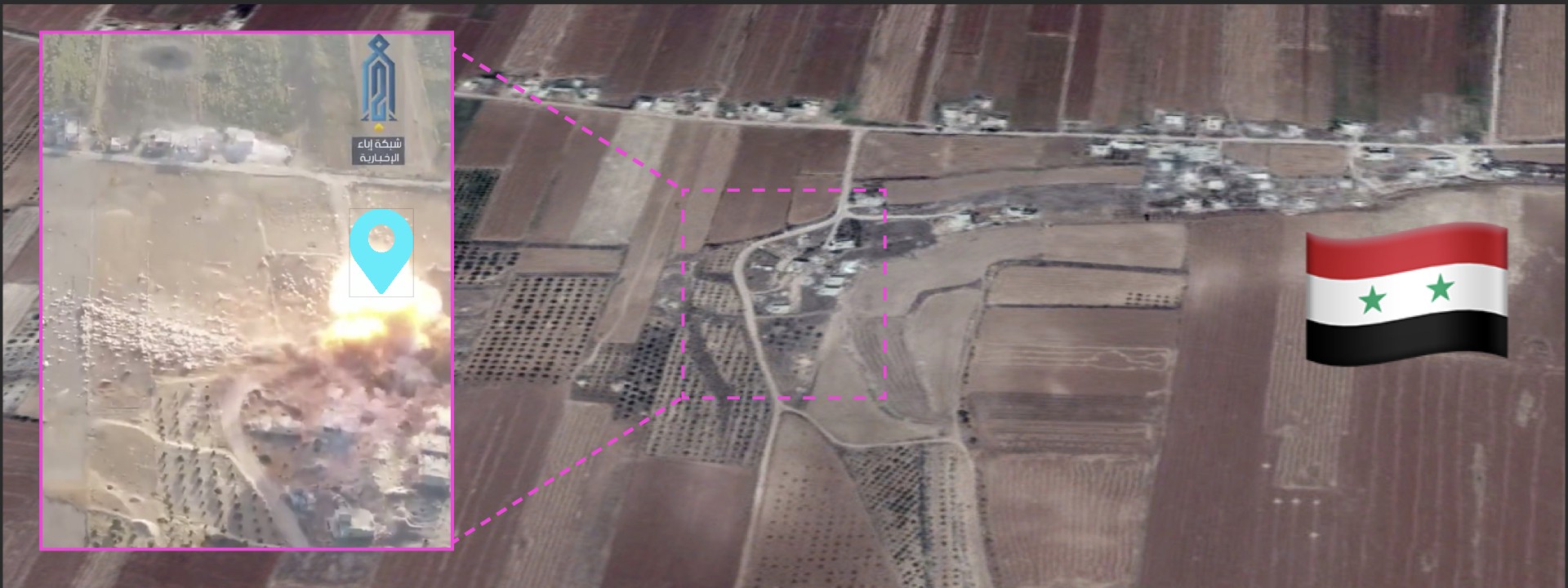Syrian Rebels Deploy ISIS-Style Suicide Car Bomb Against Assad Forces
Geolocation confirmed the incident took place in Syria’s North Hama region
Syrian Rebels Deploy ISIS-Style Suicide Car Bomb Against Assad Forces

Geolocation confirmed the incident took place in Syria’s North Hama region

Open-source footage surfaced on social media showing Syrian rebels using a suicide vehicle-borne improvised explosive device (SVBIED) against the Syrian Arab Army in the North Hama region of Syria.
SVBIEDs are designed to deceive, confuse, and counteract the tactics used by conventional armies. The use of SVBIEDs is unorthodox in conventional military conflict, but ISIS has deployed them to destructive effect. Use of such means of warfare suggests that the rebel faction might have trouble achieving their goals through more traditional ways of fighting but also exposes their extremist nature. SVBIED played a crucial role in the expansion of Islamic state in 2013–2014, giving firepower superiority for the less numerous and worse-equipped ISIS militants.
The main objective underpinning the design of an SVBIED is to protect the driver and the explosives from premature detonation. ISIS has made the weapons highly customizable, adjusting the type of explosives mounted, camouflage used, and armor equipped to best suit the mission. Usually, once the vehicle rams or gets near the target, the devoice detonates, killing the driver in the process. Due to the suicidal nature of these missions, they are usually carried out by religious extremists.
On August 2, 2019, a video surfaced on Twitter that indicated that an attack had taken place on August 1. The video had an al-Qaida-affiliated Ibaa News Network watermark and the tweet suggested that Hayat Tahrir al-Sham (HTS) was responsible for the attack. A reverse image search on Google suggested that the video is most likely authentic, as no results indicated that it had been posted before.
#Syria: drone view showing #HTS SVBIED blasting yesterday a Regime position in #Hasraya (N. #Hama). Multiple vehicles destroyed. pic.twitter.com/IRufmIup84
— Qalaat Al Mudiq (@QalaatAlMudiq) August 2, 2019
In the surfaced video, the SVBIED rushed over a dusty road toward a sparsely urbanized area. After approaching a building, the car detonated, releasing a large plume of smoke in the air.
At the beginning of the video, the opposing side tried — and failed — to take out the SVBIED with a rocket-propelled grenade (RPG) launcher, with the grenade exploding on the left side of the road, leaving a small smoke plume.

The DFRLab found a separate video with footage of an SVBIED, which was highly likely used in the August 1 attack. The SVBIEDs in this separate video appeared to be standard design pick-up trucks with welded armor plates, similar to devices developed by ISIS.
https://twitter.com/i/status/1157012339025154056
A tweet posted on August 1 suggested that the vehicle was actually produced and operated by the Harakat Ahrar al-Sham al-Islamiyya, commonly known as Ahrar al-Sham. The organization is comprised of multiple Islamist and Salafist units and one of their fighters, Ibrahim al-Ibrahim, was identified as the driver of the truck.
The #SVBIED that targeted pro-#Assad forces in #Hasraya, northern #Hama this afternoon was *not* an #HTS device.
It was driven & detonated by an Ahrar al-Sham (#NLF) fighter, identified as Ibrahim al-Ibrahim.https://t.co/2UXIGvpLNt pic.twitter.com/xxOv669C82
— Charles Lister (@Charles_Lister) August 1, 2019
The DFRLab used geolocation tools to verify that the incident actually took place. The August 2 tweet with the video in question suggested that the attack took place in Hasraya, a small village in the North Hama region.

Upon closer investigation, the location of the video was determined to be 10 kilometers east from Hasraya, close to the village of Abu Raidi.

Additionally, daily satellite imagery from Planet.com helped verify the location of the explosion. The comparison of available satellite imagery from July 31 and August 2 revealed slight differences in the buildings. Despite the relatively low resolution of the images, an impact from the explosion is visible.

LiveUAMap data suggested that the frontline between Assad’s forces and the those of the rebels on July 31 was only a couple of kilometers from the location of the explosion. This shows that the SVBIED was likely used to break through the frontlines, which have remained fairly static throughout 2019.

Additionally, on July 29, a user uploaded a video of the elite Tiger Forces of Assad’s Syrian Arab Army (SAA) to Twitter, indicating that the unit was operating in the town of Al Jibeen, which is only a few kilometers from Abu Raidi. The Assad regime often uses the Tiger Forces during its most strategically important battles.
https://twitter.com/i/status/1155779729598889984
The DFRLab was able to corroborate the footage via geolocation. The remains of the mosque seen in the video matched features of the mosque south of Al Jibeen. The sparse buildings along the road used by the soldiers also matched those in the southern part of the town.

The elite unit’s presence in the area could have potentially driven the rebels to resort to the use of SVBIEDs, an unorthodox means of warfare that the rebels have resorted to before, though infrequently.
Follow along for more in-depth analysis from our #DigitalSherlocks.

